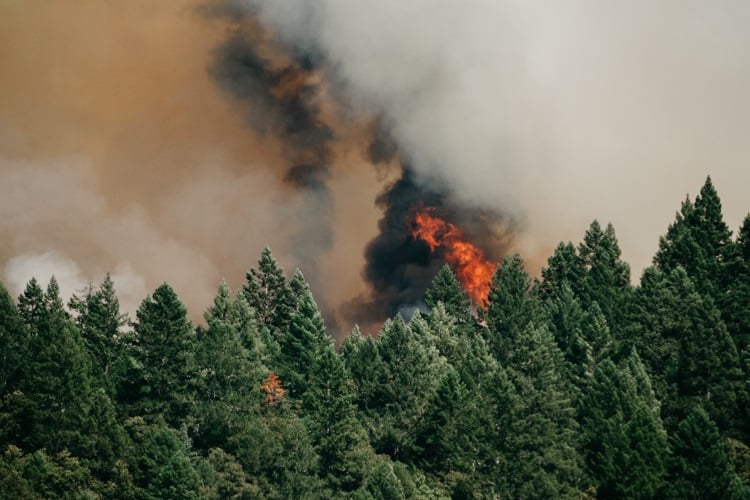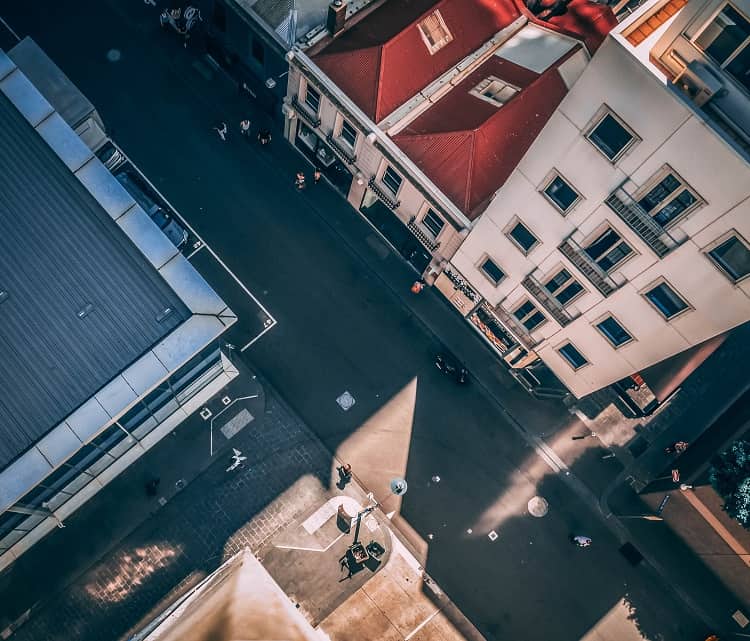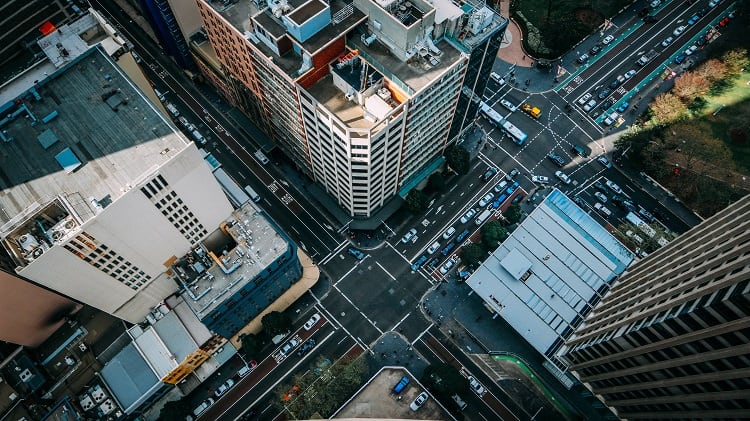6 Ways Police Departments Use Drones in Their Work
BY Zacc Dukowitz
10 May 2018We’ve seen the use of drones explode in the past few years, expanding to new sectors and providing value that previously could have only been imagined—and police departments are no exception.
From monitoring emergency scenes to helping find missing people in search and rescue operations, police departments have been utilizing drone technology in creative and life-saving ways.
Here are six ways that police departments are using drones in their operations.

Tom Agos of the Gurnee Police Department in Gurnee, IL uses a drone to assess damage following a flood
1. Mapping Highly Frequented Locations
Police use aerial data to map highly frequented locations in cities, such as malls and schools.
In the event of an active shooter scenario, fire, or other emergency that would require an evacuation or some kind of tactical response, orthomosaic maps created with data collected by drone can help law enforcement to better understand the specific situation they’ll be facing when they arrive on the scene, and prepare themselves accordingly.
For example, during an active shooter scenario, an accurate map created with aerial data can help law enforcement find possible exit points for evacuations, or entry points where they can confront the shooter, as well as generally helping them to cover all possible openings to the structure.
[What is an orthomosaic map? An orthomosaic map is a detailed, accurate photo representation of an area, created out of many photos that have been stitched together and geometrically corrected (“orthorectified”) so that it is as accurate as a map.]
2. Documenting Crime Scenes
Sometimes there isn’t enough time to fully comb a crime scene in person, and even if you do, you might miss something.
An orthomosaic map allows investigators to look back over a crime scene in detail, even after they’ve left.
In a presentation at InterDrone last year we heard about an investigator who was able to recover a bloody cell phone after looking closely at a map of a crime scene, which ultimately helped identify a suspect in a homicide investigation.
3. Surveying Disaster Sites
Drones can help police officers get an understanding in real time of what the damage looks like on the ground following a flood, storm, earthquake, or other major disaster.

Image Source
Aerial data collected by drone can help direct resources to where they’re needed most, and can help protect first responders and emergency personnel by giving them information on the nature of the scene they’re entering, so they can avoid risks and keep themselves from harm.
After Hurricane Harvey hit Houston, authorities used drones to survey flooded neighborhoods, evaluating the damage, identifying where to divert resources first, and also looking for people who may have been trapped in their homes or vehicles.
4. Search & Rescue
UAVs can help police officers and other emergency responders find missing or lost people.
By covering large areas in a short period of time, a drone can help save a life by locating a person much more quickly than could be accomplished on foot, so that they can get the medical care they need.
In one example in the UK, a man had been thrown from his car at night in a crash and was in danger of freezing to death if not found quickly. A drone equipped with a thermal camera found the man, who had already become hypothermic, in a six foot-deep ditch over 500 feet from the crash site. Because they found him quickly, they were able to get him to medical treatment and save his life.
[Related read: What Is a Public Safety Drone? An In-Depth Guide—Including 54 Use Cases]
5. Accident & Traffic Management
Drones can provide important information during major traffic accidents by visualizing the magnitude of the accident and its impact on traffic flow.
This information can help redirect traffic, and can also help incoming emergency units responding to other pressing issues around the accident prioritize their efforts, making the response as efficient as possible.
6. Dealing with Bombs and Hazardous Materials
Drones also help the police by investigating possible bomb threats remotely, without putting officers in harm’s way.
Not only that, but drones can help collect samples of potentially hazardous materials, either in a scenario where it’s suspected that someone is intentionally trying to hurt people, or when a spill, leak or other hazmat incident has occurred by accident. These samples can then be used to evaluate the threat, and deal with it appropriately.
For example, following an accident at a nuclear power plant where the repercussions are still unclear, a drone can help police to provide situational awareness about radiation levels and other key details from a safe distance.
Of course, these examples are just an overview of some of the ways law enforcement currently uses drones in their work. As time passes and drone technology advances, we’re sure to see even more uses crop up.




